
Favero has launched their newest Assioma variant today, the DUO-Shi, which simply takes the existing Favero Assioma pedals, but now with Shimano SPD-SL compatibility. Sorta.
See, while that’s the end-point, the DUO-Shi product is actually just the pedal spindles (for $589USD or ~589EUR including VAT (VAT inclusive pricing varies based on exact EU country). You’ll need to go out and buy the Shimano SPD-SL compatibility pedals of your own choosing. The good news there is that makes this product roughly $500-$600 cheaper than Garmin’s Rally SPD-SL variant. The bad news is you’ve got an arts and crafts project, plus some other technical things to consider. Don’t worry, we’ll talk about that in a second.
In any case, I’ve actually been quietly testing them for more than a *year*. Yes, an actual year. On and off (literally and figuratively), compared to a wide range of power meters, bikes, and smart trainers. Quietly removing them before photoshoots, but otherwise using them just like any other Favero Assioma pedal (because, they are exactly the same).
More recently I got the final production version in, which…are exactly the same internally as well. But with that comes final packaging and all the final goodness you’d expect. So that’s what I’m focusing on in this review. Oh, speaking of which, these are media loaner units, and both sets will go back to Favero afterwards. I’ve already got a few other Favero Assioma sets I’ve bought over the years that I use around the DCR Cave.
If you found this post useful, consider becoming a DCR Supporter which makes the site ad-free, while also getting access to a mostly weekly video series behind the scenes of the DCR Cave. And of course, it makes you awesome.
What’s New & Unique:
In short, nothing is new. This is the exact same Favero Assioma spindle as the previous edition, except it’s got a small oil retainer glued on. Instead, that tiny cap enables it to be inserted properly into a Shimano pedal, which in turn will measure your power exactly like the previous Favero Assioma. Favero says though that the gluing of that small retainer on the pedal spindle requires them to have a factory calibration procedure, which is why they can’t just offer a simple $20 conversion kit.
Otherwise, Favero states it’s exactly the same spindle as before. So this means that the pod remains as before.
Now – what’s important to know here is that this isn’t a completed product you can take home and install immediately on your bike. Instead, you will ALSO need to buy compatible Shimano pedal bodies (or perhaps you already have them), and then insert the Favero spindle into the Shimano pedals. This requires two wrenches that you probably have at home, and about 3-5 minutes of work.
The Assioma Duo-SHI are compatible with the following Shimano SPD-SL (road) type pedals (and thus SPD-SL cleats):
Shimano PD-R8000
Shimano PD-R7000
Shimano PD-6800
Shimano PD-R550
Shimano PD-R540
Note that Shimano’s DuraAce pedals use a different internal spindle, and thus are not compatible.
When all that is said and done, you’ll have a Shimano Favero Assioma power meter system, though with a slightly expanded Q-Factor, from 54mm to 65mm. The q-factor is the measurement of the distance between the pedal bodies (specifically the point the pedal is inserted into the crank arm). However, in this case, that would incorrectly not account for the pedal platforms being further out, thus, in reality, a better comparative measurement here is to the center of the pedal platform.
Q-Factor is confusingly stated as a measurement of one of two things:
1) The distance between the crank arms on both sides of the bike
2) The distance between the crank arm and the center of the pedal platform.
Much will be made about the increased q-factor by Favero. For some people, it’s everything and a deal-breaker. For the other 98% of us…shrug. The reason? Almost every bike type has a different q-factor. For fun, here’s my collection of bikes:
My road bike (Canyon Ultimate CF SL): 140mm
My triathlon bike (Cervelo P3C): ~150mm
My mountain bike (Canyon Exceed CF SL 5.0): 170mm
My cargo bike (Urban Arrow): 170mm
And then here’s a pile of popular indoor bikes, and their q-factors, for reference:
Stages Bike SB20: 157mm
Peloton Bike/Bike+: 170mm
Tacx NEO Smart Bike: 147mm
True Kinetix TrueBike: 155mm
Wattbike Pro: 173mm
Wattbike ATOM: 160mm
Wahoo KICKR Bike: 150mm
And remember, your pedal q-factor is technically atop these measurements. So, when it comes to pedal measurement, we’re talking this bit here, shown on an older Favero Assioma (standard) image:
Variations in pedals, as measured from the edge of the crankset arm to the center of the pedal:
Garmin Vector 3/Rally Series: 53mm (55mm with their stock spacer)
PowerTap P1/P2: 54mm
Favero Assioma: 54mm (55mm with their stock spacer)
Favero Assioma Shimano: 65mm
Shimano Ultegra (non-power): 53mm
SRM X Power: 54mm
So yes, this pedal q-factor is different than others – but so are all your other bikes. So if you’re switching between bikes, you’ll likely never notice. It was a non-event for me. I’ve been riding the Favero Assioma DUO-Shi on and off for a year, alternating days on other road pedals and bikes without ever noticing.
But again – if you’re purely a roadie, then maybe you’ll notice – and of course, if you switch between a mountain bike and road bike frequently, then those are literally a wash. Of course, to each their own. You do you, I just keep pedaling.
Unboxing:
To begin, and also to reiterate again – when you buy the DUO-Shi, you DO NOT GET PEDALS. You get spindles, for which you need to buy pedals and put them together. Whereas when you buy regular Favero Assioma pedals, you get the whole thing pre-built (but for LOOK KEO pedals). With that note, here’s the box:
Crack that box open and you’ve got the two spindles poking out. Or rather, the pods poking out.
Here’s a closer look at them:
And, if you play peek-a-boo, you’ll find the spindle below the box top:
Here’s the weight of that:
Now, inside the box you’ll find yourself a pedal wrench, charger block, charger cable, different power adapters, the two spindles, and some washers.
Meanwhile, you’ll need to go out and buy compatible Shimano pedals. If you stick all this stuff in one pile, you can see which parts you need to buy, and which parts they provide. Also, as you’ll soon discover, you’ll also need another two wrenches to actually put the spindles together.
And here you can see essentially how the two spindles align up to replace the two spindles that already exist in the Shimano SPD-SL pedals you’ll buy:
You can also see more clearly how when inserted in, the Favero spindles increase the Q-Factor because of the fact that they’re longer, to accommodate the pod.
With that, let’s put humpty dumpty together.
Assembly:
The manual is relatively straightforward, though the first time you’ll do it it’ll feel like the arts & crafts project it is. But remember, you’re saving $400-$500, so…that’s a lot of ice cream.
You’ll notice above, it asks for both a 17mm wrench and a 19mm wrench. Most people have these. Now, if you’re like me you’ll probably spend half a day looking for them because they’re not organized. I easily found a 17mm wrench, but couldn’t find my 19mm wrench. So, I grabbed a well-aged/ignored adjustable wrench to fill in the gap.
You’ll begin by removing the existing spindle from the Shimano pedal. You’ll use the 17mm wrench for that. It really only takes like 20 seconds.
Then, you’ll grab the (hopefully) correct spindle to insert into the correct pedal. As in, right with right, left with left.
Then you’ll take that 19mm wrench with the Favero spindle and get things all happy and snug with the pedal. Again, takes about 20 seconds:
And…done:
Well, actually, you’ll now repeat that for the other side, then donezo, for realz this time:
The entire thing at this point will weigh about 157g (per pedal) using the Shimano Ultegra PD-R800 pedals.
Bike Installation:
With everything assembled, we’ll need to get it affixed to our bike. This assumes you’ve removed your existing pedals using either a hex wrench (pictured below, included with the Favero Assioma pedals), or a standard pedal wrench. For the installation however, it requires the below hex wrench (included), as there’s no place to grip a pedal wrench onto due to the pods.
For installation, you can choose to use either of the two spacers (per side). The general gist of this is that you don’t want the pods to touch your crank arm when screwed in. Else that can cause damage to the pods, and inaccurate readings. In most cases, a single spacer will work perfectly, and is what I use.
Then, simply hand/finger spin the pedals onto the crank arm:
Once that’s snug, then go ahead and use the included hex wrench to make it nice and tight. Officially there’s a torque spec there, but since they didn’t include a torque wrench, and since I’ve been around this block long enough to know it won’t matter – you’re basically going to go with “nice and firm tight”, but not “gorilla tight”. Meaning, don’t try and break it. Just give it a mediocre arm-wrestling effort, and you’re fine. Note below how you can still see a tiny gap between the pod and the crank arm – that’s GOOD! If you can’t see any gap, add a spacer.
Now repeat for the other side:
Now, you’ll need to do four things:
A) Wake up the pedals using the power cord
B) Activate the pedals using the app
C) Do a couple of short 5-10 second sprints (indoors or outside, doesn’t matter) to bed them in
D) Do a zero offset
To wake up the pedals for first use, simply attach the power cord pods to them, which pulls them out of the deep-sleep state. Normally just rotating them will wake them up, but for first use, they require attaching the power cable for a second.
Next, grab the Favero Assioma app off the app store, and go through the activation process. It only takes a second, but without it your pedals won’t transmit any data. Again – no activation = no data.
Now, with that set, you can do a zero offset now if you’d like. And that’s fine. We’re gonna do it again in a few minutes. So instead, go and do some hard sprints. Ideally 3-4 of them, and ideally 5-10 seconds long. Also, ideally, as ‘sharp’ as you can. Lazy sprints aren’t good here. You’re essentially trying to tighten up the pedals to the crank arm, which in turn increases accuracy. If you don’t do this, it’ll basically take about a normal ride to complete and you’ll notice slightly inaccurate data during this ride. Again, doing this on a trainer is perfectly fine.
Finally, do one last zero offset (also called a ‘manual calibration’ in the app), on the app or your bike computer. And, if you haven’t already done so, validate your crank length specified in the app matches that of your crank arm (e.g. 172.5mm, 175mm, 170mm – those are the most common three). It’s printed on the inside of your crank arm, usually near the very end. You can see mine showing 175mm:
Ok, now, let’s talk day-to-day stuffs.
Basic Riding Details:
We’ll first start with the app, and quickly run through some of the options there. The Favero Assioma smartphone app is how you’ll initially activate the pedals, as well as update firmware and configure any settings. For most folks, you’ll probably only touch this app once or twice a year (when Favero releases new firmware). Everything else, including recording your rides, you’ll do on your normal bike computer. This is no recording functionality here.
When you crack open the app you’ll see the option to search for pedals by tapping the magnifying glass. After that, you should see your pedals pop up, showing the ANT+ ID (even though it’s searching via Bluetooth Smart). The ANT+ ID (6624 in my case) is what you’ll see displayed on virtually every bike computer and cycling app. Go ahead and tap connect to connect to your Assioma pedals.
Once connected you’ll first see the screen at the left (below), showing the serial number, ANT+ ID of the set (if in a pair), and the battery level of each pedal. Tap on the settings option at the bottom and you can access all of the settings.
To iterate through some of these settings, the first one is manual calibration, or what’s technically known as a ‘Zero offset’. It recommends doing this with the crank arms vertically oriented, and like all power meters, you want to be clipped out of your pedals (and ideally off your bike). It doesn’t give you any specific value, just a success or fail message.
If you were to head back to the main page, you’ve got the previously mentioned option to set the crank length. This is important. If your crank length is set incorrectly, your wattage will be inaccurate. Not massively so, but slightly off. And since the point of buying an accurate power meter is to have accurate numbers, you’ll want to take the 5 seconds to set this correctly.
Below that is the ‘power scale factor’, which can be used for a wide assortment of non-normal situations. This can include having different crank lengths, or having a known inaccurate pedal (validated via static weight test). I’d argue if you have that scenario, you should contact support and fix it. But hey, you do you.
After that are two different app compatibility settings:
A) Double the power: This is useful for poorly programmed apps and watches (mostly) that still, half a decade later, haven’t figured out how to handle multi-channel power meters.
B) Compatibility with other apps: This is basically a variant of the first double-power category for apps that also can’t figure this out. A good example here being Zwift.
Below all that you’ve got the ability to convert a Favero Assioma Duo into an Uno, as well as make an Uno a Duo. Then you’ve got three more options most folks won’t use:
A) Static weight test: This is if you have a calibrated weight, to validate the calibration of the power meter.
B) Travel mode: This will put it into a mode that shuts down the pedals entirely, but requires you connect a charger to wake it back up. I’d generally *strongly* recommend against this. The reason is that there’s an approximately 110% chance you’ll put your pedals into this mode thinking you’re clever while packing your bike bag for a race. However, later that evening you’ll forget to grab your charger. You’ll thus arrive at your race unable to wake up your pedals, making yourself screwed. I mean, that’s just me. Maybe you’re smarter or somehow more organized (in which case you’ll forget your charger at the race hotel, screwing yourself for when you get home a few days later). Don’t get me wrong, I do appreciate Favero adding this feature. But like a McDonald’s gift card, it’s only a recipe for trouble.
C) Automatic Standby: This is below the travel mode, and allows you to change the automatic standby feature. By default it’ll go to sleep after 5 mins, and then wake-up again immediately upon pedaling. This saves batteries for café stops and such. However, if you’ve got a really finicky bike computer that doesn’t properly re-connect to sensors after a café stop, then perhaps you’d increase this timeout (at the expense of battery life).
And finally, to update firmware, you’d tap on the firmware tab, which, does exactly what you’d expect. It takes a couple of minutes, and updates the firmware via Bluetooth Smart. Favero has released numerous firmware updates over the years for their existing Assioma pedals, though that pace has slowed as the product has reached market feature maturity.
Ok, so with all those things covered, we can get it paired up to our bike computer. Pretty much any brand will work with the Favero Assioma pedals. I’ve used them successfully and without issue with almost every bike computer out there, though the features will vary based on the bike computer. For example, at the ‘low end’ of Favero features you’ve got the Suunto 9 Peak I was using last night. That covers the basics of power, but not things like left/right balance.
Then, you’ve got the Wahoo BOLT V2, also used last night. That does show left/right balance, but doesn’t record attributes like Cycling Dynamics, which Favero transmits. Finally, you’ve got the Garmin series of devices, like the Edge 1030 Plus I further also used last night, which records all the other stuff, plus Favero’s variant of Cycling Dynamics.
For fun, we’ll pair it up to a Wahoo BOLT V2. To do so, go into the sensors menu and search for sensors. It’ll come back and find a power sensor (or, many in my case). You can see the POWER 6624 listed, which is the ANT+ ID of the Favero pedals, so I’ll tap Save.
Once I’ve got that done, you’ll see the details of the power meter, including connection type (ANT+), the ID (6624), and the crank length properly enumerated. As a general rule of thumb for power meters, you should always pair via ANT+ over Bluetooth Smart, if able. The power meter spec is far more mature on ANT+ than Bluetooth Smart for data field types, where most advanced pedaling data metrics for most power meters simply don’t exist over Bluetooth Smart (regardless of which bike computer you use).
On any bike computer you’ll be able to calibrate it, and you can see here when I do that I get back a success response of ‘0’ and that it’s complete.
Since we’re on the BOLT, here’s what the power looks like while pedaling along. In this case I’ve configured some 30-second data fields, as well as left/right balance.

Meanwhile, if we switch over to the Garmin Edge 1030 Plus, and set it for the Cycling Dynamics data page, you can see some of the Cycling Dynamics data, specifically the ‘Power Phase’ data, shown at the top and bottom of the page, as well as the left/right breakouts. All of this is recorded to the data files.
By default, Favero transmits this first set of ‘normal data’ to basically every bike computer/app out there:
– Power (Total): Your total power being transmitted – e.g. 227w (via ANT+ & Bluetooth Smart)
– Power (Balance, left/right): Your power balance between left and right side – e.g. 46%/54% (via ANT+ & Bluetooth Smart)
– Cadence: Your pedaling revolutions per minute – e.g. 94rpm (via ANT+ & Bluetooth Smart)
– Torque Effectiveness: How much of the pedal stroke is actually contributing to going forward (versus lifting up on the pedal) – i.e. 74% (via ANT+)
– Pedal Smoothness: How smooth your pedal stroke is all the way around – i.e. 82% (via ANT+)
However, in addition, almost two years ago to the day, they added ANT+ Cycling Dynamics to their Favero Assioma pedals too. At present, only Garmin supports it (though other ANT+ manufacture members can certainly add it).
The ANT+ Cycling Dynamics spec allows for three additional pieces of data, for which Favero has implemented two of them:
– Platform Center Offset (PCO): Not implemented on Favero Assioma
– Power Phase: Yes, implemented on Assioma
– Rider Position: Yes, implemented on Assioma
And again, to see any of this, you’ll basically need to be on a Garmin device. While Wahoo has implemented advanced pedaling metrics for Pioneer power meters, they don’t save the data, nor is that ANT+ Cycling Dynamics. Maybe now that Pioneer is dead, they’ll switch over. Or, maybe not, since they’ve got their own pedals coming out.
Now, after a ride you’ll be able to see this additional Cycling Dynamics data on Garmin Connect (or the mobile app), it won’t show up on sites like Strava. You can look at my ride from last night as an example.
At the top section of the graphs you’ve got cadence, then the seated/standing position (the neon green bits are me standing, blue is seated). Followed by wattage and left/right balance.
Then below that, you’ve got the platform center offset. Except Favero doesn’t transmit this, so these will be ‘0’ across the board.
After that, there’s power phase, which can show both the start/end as well as peak power by selecting the drop-down.
All of this data you can dig in more deeply if you want from a charting standpoint by expanding it and zooming/etc…
Down below further is a pile of summary data:
And then you can also tap on the ‘Cycling Dynamics’ tab to view summary info there too, with pretty graphics. Except PCO won’t show up, because PCO isn’t on Favero Assioma pedals.
I won’t re-hash how (or how not) to use Cycling Dynamics data on Favero Assioma’s, as I already wrote a long post on that here you can reference.
When it comes to charging, the Favero Assioma pedals use rechargeable batteries that are built into the pods themselves. You’ll see the small contact points on the outer edge of the pod:
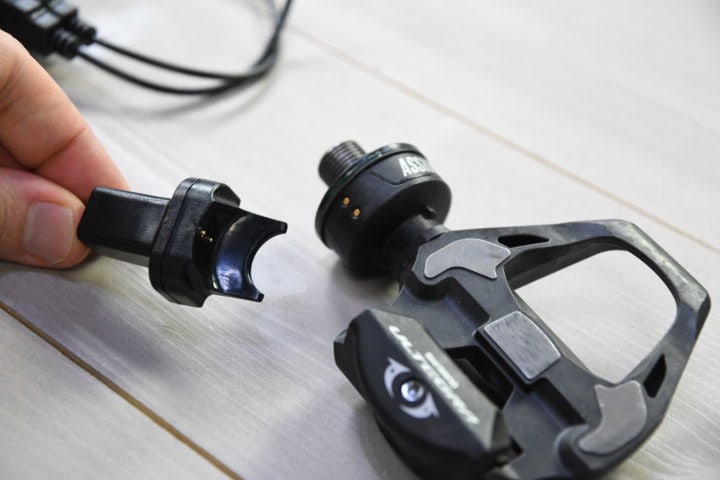
The USB-based charging connector then magnetically snaps onto these. It fits quite nicely, and illuminates once charging. Favero advertises 50 hours of battery life per charge. That seems plausible to me. I honestly don’t track my total battery hours on bikes that closely, especially since I’m often moving them around for photos/videos/etc… In general my gut check here says ‘sure, sounds fine’ (along with my gut chuck on using Favero Assioma pedals for four years otherwise).
In any event, the two charging cords connect to the dual-USB port power outlet. The cables are nice and long, so it’s easy to charge them while still on the bike.
Also – I’ve seen some concern about what happens when the batteries ‘die’, apparently in reference to how you might swap them out. Some of this is due to misunderstandings about how rechargeable batteries die. First off is that batteries are generally rated to a certain number of recharge cycles, in the case of the Assioma battery, that’s estimated to be about 500 cycles (per an e-mail from Assioma). Once it reaches that number, they don’t stop working. Instead they might slowly degrade, perhaps to 80% of battery capacity. With an example battery life of 50 hours, and the 500 recharge cycles, that puts you at 25,000 hours of battery life before it starts to degrade. That’s 24 years of riding 20 hours per week. Or almost 50 years if you rode 10 hours per week. Seriously, you’ll have long moved onto something else by then. Battery cycle time is not your concern here.
Finally, a brief note about the pod durability. The pods are internally sealed with a resin, which protects everything inside of them. In my Favero BePro review nearly 6 years ago I noted that in the couple months I used my set then, that the outer shell got damaged and I was concerned about long-life durability. Thankfully, that turned out not to be an issue, and I don’t believe I’ve received a single complaint about that being an issue for the BePro units. And with Assioma, breaking of the pod is virtually unheard of.
The main issue at this point, in 2021 – is that there’s a pod at all. Obviously, four years ago we had this discussion when the Assioma came out, given that neither PowerTap or Garmin had pods then. Fast forward a few years and SRM doesn’t have pods either. I think it’s a valid criticism that in four years since Assioma’s have come out, the spindle is identical to back then and the pod is still there. While Favero has come out with various firmware updates (like the Cycling Dynamics), I think a lot of people were sorta hoping to see that pod design go away, given the advances in technology.
Nonetheless, there’s something to be said for reliability and a known quantity – for which the Shimano variant of Assioma delivers upon.
Power Meter Accuracy:
I’ve long said that if your power meter isn’t accurate, then there’s no point in spending money on one. Strava can give you estimated power that’s ‘close enough’ for free, so if you’re gonna spend money on something, it shouldn’t be a random number generator. Yet there are certain scenarios/products where a power meter may be less accurate than others, or perhaps it’s got known edge cases that don’t work. Neither product type is bad – but you just need to know what those use/edge cases are and whether it fits your budget or requirements.
As always, I set out to find that out. In power meters today, one of the biggest challenges is outdoor conditions. Generally speaking, indoor conditions are pretty easy to handle, but I still start there nonetheless. It allows me to dig into areas like low and high cadence, as well as just how clean numbers are at steady-state power outputs. Whereas outdoors allows me to look into water ingest concerns, temperature and humidity variations, and the all-important road surface aspects (e.g. vibrations). For reference, the Favero Assioma DUO-Shi has a claimed accuracy rate of +/- 1.0%.
In my testing, I generally use between 2-3 other power meters on the bike at once. I find this is the best way to validate power meters in real-world conditions. For the final set of production pedals, I was using these other power meters or trainers concurrently in two main configurations:
Outdoor Testing Config (Canyon Ultimate CF SL)
– Favero Assioma DUO-Shi
– Quarq DZero power meter
– PowerTap G3 hub power meter (when outdoors)
Indoor Testing Config (Canyon Ultimate CF SL)
– Favero Assioma DUO-Shi
– Quarq DZero power meter
– JetBlack VOLT Smart Trainer
But the reality is I’ve literally got data sets over the last year comparing against:
– TrueKinetix TrueBike (April-May 2020)
– Tacx Flux 2.1 (July 2020)
– Wahoo KICKR V5/2020 Trainer (August 2020)
– And many more outside sets (July 2020 – June 2021)
First off, indoors. Starting off with something relatively straightforward, an ERG workout with various intervals at three main intensities, including 30-second sprints. In this workout I’m looking for stability of the power, as well as lack of drift. A workout like this makes it easy to spot drift (such as temp drift), since you’d see things start to differentiate from start to finish. In any case, here’s the data set:
As you can pretty easily see, that looks super crispy good. The data sets are very closely aligned between the units (Quarq DZero crankset and the JetBlack VOLT). One might argue the JetBlack should be a hair bit lower, but in the context of the Favero Assioma that’s not really the focus.
If we look at the intervals where the trainer jumps up quickly, the Favero reacts instantly, and also correctly shows when I wasn’t paying attention at the start of an interval – as you see a bit of an oscillation there. That’s real. And, interestingly, also shows where the JetBlack applies a touch bit of ‘ERG Smoothing’ to make it look like those don’t exist. But in this case, the Quarq & Favero power meters accurately show the truth (my inattention, causing the little blip, since my legs weren’t ready for it).
Here’s another example a few interval chunks later, again, every unit is very close here, with the slight timing differences between sets mostly owed to the nuances of multiple devices and recording rates. Note however on the middle interval below, I was really focused on it, and there isn’t any sort of blip/wobble in my power. This obviously has absolutely nothing to do with accuracy, except to show how sensitive power meters can be.
In terms of cadence, I haven’t seen any variations at all here with the DUO-Shi units. These mirror the Quarq, and even the JetBlack mirrors it. In fact, across both sets I’ve had for the past year, cadence has been absolutely spot-on.
Next, we’ll dive over into simulation mode for a ride on Zwift. In this case, I’m starting off the first 30-35 minutes in a large group at a relatively consistent wattage, but with any sort of group ride, you get constant micro-fluctuations in wattage, making it fun to see how the different units respond. In particular, some power meters and training can do funky things with that much movement, in terms of how they handle soft-pedaling. Here’s that data set:
As you can see, it’s incredibly similar. Let’s zoom in though on a few random chunks. The first thing I’ll note is that we generally see ‘proper’ ordering, with the VOLT as the lowest power source (since drivetrain losses occur the further away from the foot we get), and the Favero/Quarq the highest. So that’s good.
I notice that the Favero/Quarq units spike together correctly on the sprints, with the VOLT undershooting slightly. That’s somewhat common in many trainers, especially as they try and play ‘catch-up’ on quick surges. But it’s good that I don’t see any delay on the DUO-Shi or Quarq units.
Here you can see just how close all the units are, with only the slight differences from the trainer when I surge, depending on how quickly it is that I surge (some surges the trainer is fine, others it’s a bit latent).
If we look at this 800w sprint (keeping in mind this multi-second average graph is smoothed, so the actual value is higher), you can see it’s actually rather close to the Quarq. Whereas the Favero overshoots a bit higher. In any sort of sprint effort, it’s often rather difficult to know exactly which one is actually correct.
Meanwhile, cadence is virtually identical across the board again on this, save the handful of times for the trainer with estimated cadence and it briefly recovering on a sprint (or rather, the afterglow of the sprint). But again, zero issues from the Assioma here.
Ok, let’s head outside. Frankly, these sets are going to be boring. Here, let me do this backwards and instead just show you the mean-max graph for this ride from a few weeks ago (against a Quarq DZero & PowerTap G3):
It’s incredibly close between them, and the data point shown/highlighted there is the 30-second one, but as you can see, the three plots are very close (though, perhaps too close in one way, more in a second). Here’s the actual ride data:
Again, excruciatingly close here. The only nitpicking I’d have at this stage is that the PowerTap G3 is probably a smidge high, and the Favero a touch low. But this was after swapping bikes, so things might not have been fully settled yet (and in fact, the trainer rides later firm up nicely).
If we zoom in on a few different moments, you can see the slight variations between multiple bike computers/power meters in terms of recording/transmission rates, but these are super close for what is a multi-surge effort here:
Really nothing super exciting or problematic here:
Cadence is clean too. You’ll see the dips in the green graph of the PowerTap G3, as that’s an estimated cadence, and isn’t particularly great at surges for cadence estimation.
But again, things look very close here.
So, let’s switch to one last set from last night, this was a nice warm sunset ride, where the temperature slowly cooled down – great for catching any drift issues. Also, for fun, I recorded the Assioma across three different devices too (Wahoo BOLT V2, Garmin Edge 1030 Plus, Suunto 9 Peak), to catch any recording quirks there. Here’s that data set:
Note that you’ll see slightly different numbers at the bottom, due to the slightly different recording/transmission timings of each unit. But, the Mean-Max graph shows a much better picture of things – which is to say, it looks nearly identical.
If we take a look at a few spots, here’s a sprint, smoothed at 5-seconds. You can see all the units travel together fairly well, though oddly we see the data from the Suunto 9 Peak a bit more quirky. That’s because the Suunto 9 Peak (like all Suunto units), only pairs to a single side of this duo, and thus we’ll see variations based on left/right balance, unless I specifically toggle the single-channel option (which, I did not).
Still, these are very tight graphs across the board here. Again, if I were to nitpick anywhere, it’s that the G3 should be a tiny bit lower (a couple of watts, given drivetrain losses), but I think I just need to get this G3 hub in for its usual maintenance.
And cadence looks good here too.
There’s little reason to keep on showing more and more data sets. The data is spot-on for me, and replicates what I and many others have seen on the Favero Assioma units over the years. Given this is the same spindle (meaning, it’s the same thing), I figured it’d act the same. But as usual, I validate and verify it’s actually the same. Thus far, things look solid. And by ‘thus far’, I mean over a year’s worth of riding.
(Note: All of the charts in these accuracy sections were created using the DCR Analyzer tool. It allows you to compare power meters/trainers, heart rate, cadence, speed/pace, GPS tracks and plenty more. You can use it as well for your own gadget comparisons, more details here.)
Summary:
In a lot of ways the Favero Assioma DUO-Shi pedals remind me a bit of what Watteam did a few years back: Offer a cheaper product in exchange for you being the assembly factory. In other words, if you look at Garmin’s SPD-SL based product, Rally, they charge a premium for a completely assembled/supported product (among other reasons it’s premium priced, like also swapping to SPD MTB and LOOK KEO, etc..). Whereas Favero charges some $400-$500 less, but you need to source the extra parts/tools/time to complete before installation. For some folks, that’s a no-brainer trade-off. Whereas for others, the catches are less appealing.
Of course, the key difference to my Watteam harkenings is that Favero’s product isn’t fiddly and dependent on your ability to fill up water bags, and more importantly, Favero has a strong history of accuracy in their units. All three iterations of Favero pedals I’ve tested over the years (BePro, then Assioma, and now Assioma DUO-Shi) have been accurate. And not just me, but a lot of people too. I routinely use them as power meter reference devices. They’re just as accurate as the Garmin Rally pedals (really, it’s a wash in my brain).
Point being that if the assembly and q-factor limitations aren’t an issue for you, then the Favero Assioma DUO-Shi pedals are a solid option to consider when looking at power meters. Which yes, reminds me again I need to do anther power meter round-up, now that we’ve finally got some new power meters this year. Though ironically, almost everything new released this year is merely a rebrand of existing products with the same spindles. So…same same, but different. :)
With that – thanks for reading!
Found This Post Useful? Support The Site!
Hopefully you found this review/post useful. At the end of the day, I’m an athlete just like you looking for the most detail possible on a new purchase – so my review is written from the standpoint of how I used the device. The reviews generally take a lot of hours to put together, so it’s a fair bit of work (and labor of love). As you probably noticed by looking below, I also take time to answer all the questions posted in the comments – and there’s quite a bit of detail in there as well.
If you're shopping for the Favero Assioma DUO-Shi (Shimano) Pedals or any other accessory items, please consider using the affiliate links below! As an Amazon Associate I earn from qualifying purchases. It doesn’t cost you anything extra, but your purchases help support this website a lot.
And of course – you can always sign-up to be a DCR Supporter! That gets you an ad-free DCR, access to the DCR Quarantine Corner video series packed with behind the scenes tidbits...and it also makes you awesome. And being awesome is what it’s all about!
Thanks for reading! And as always, feel free to post comments or questions in the comments section below, I’ll be happy to try and answer them as quickly as possible. And lastly, if you felt this review was useful – I always appreciate feedback in the comments below. Thanks!


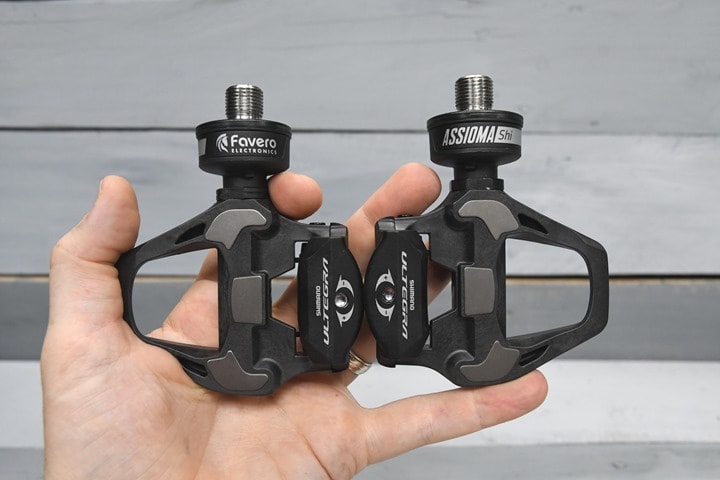

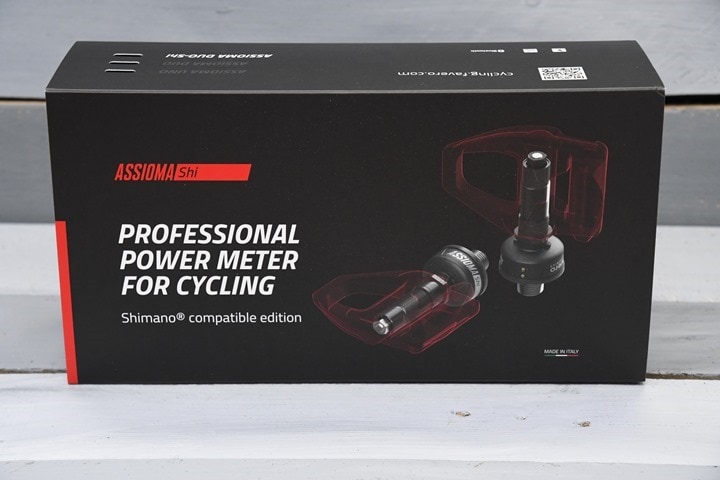
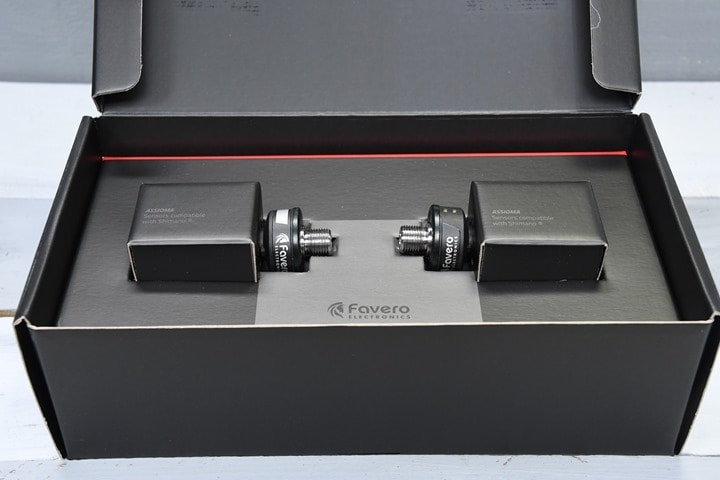

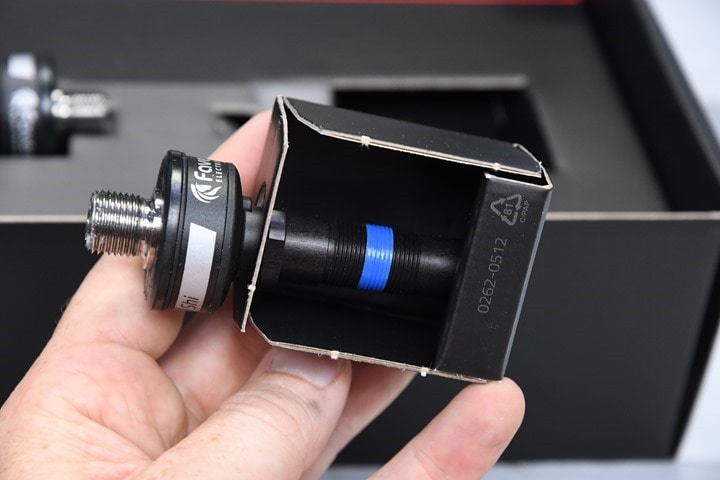
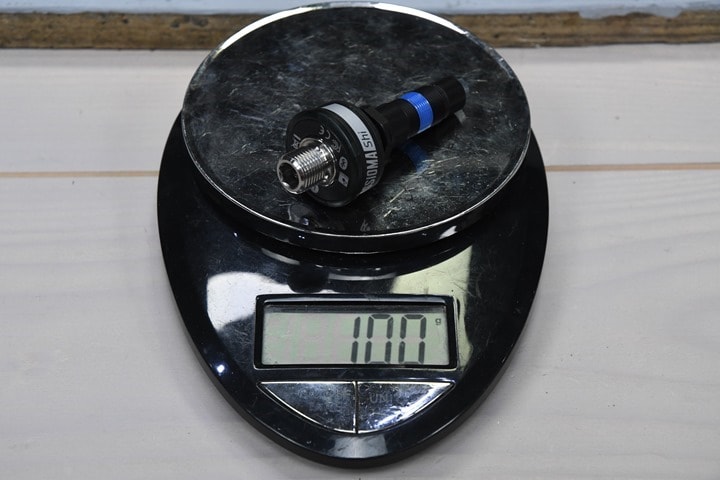
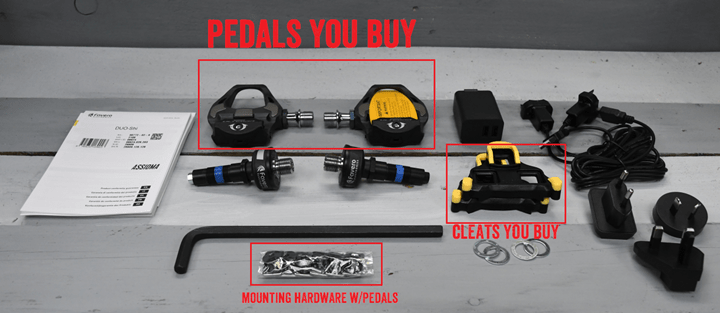
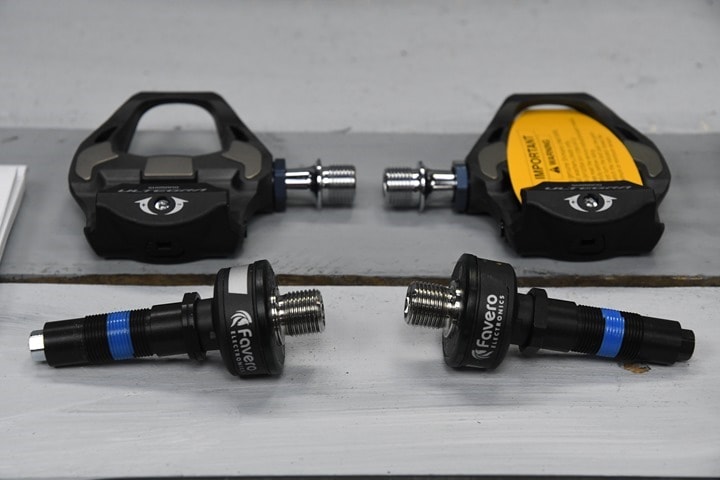

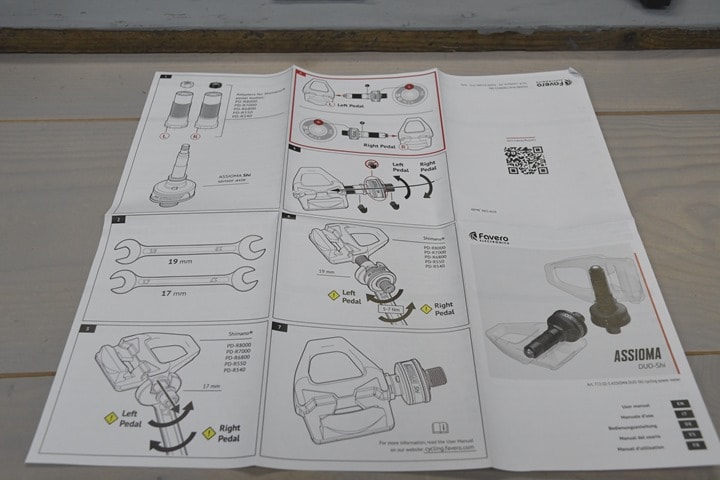
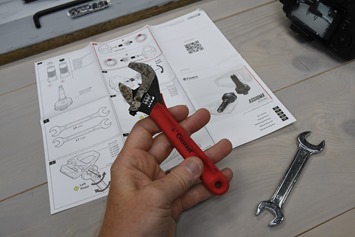
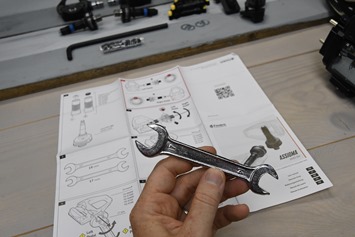
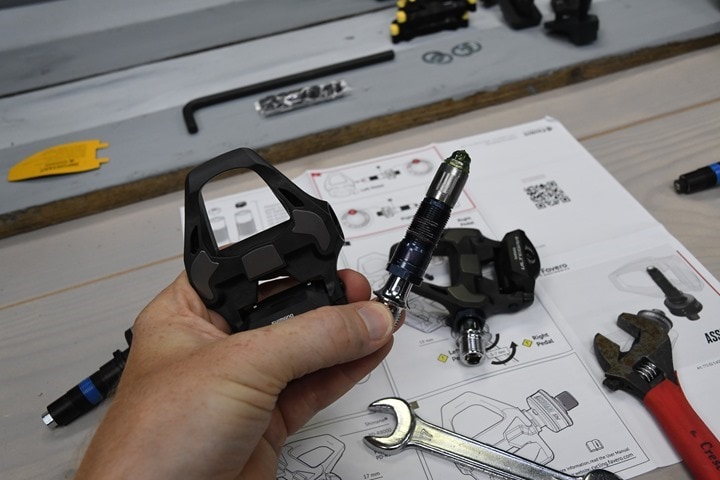
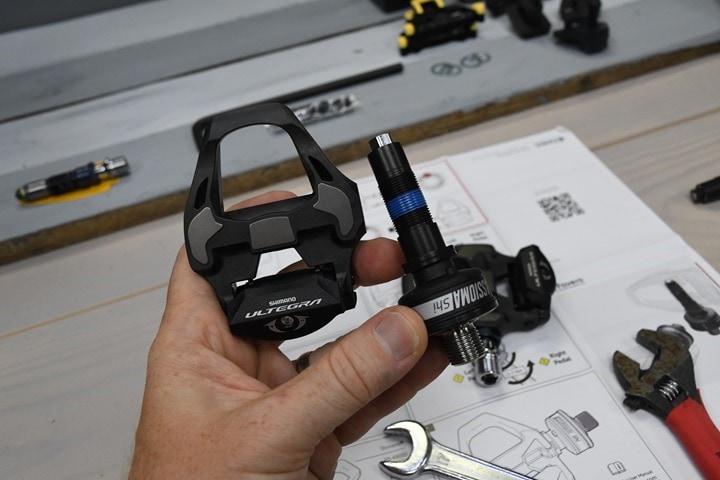
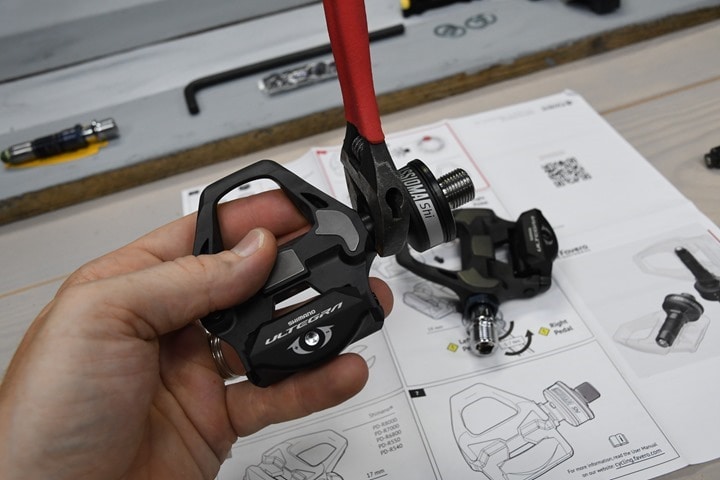

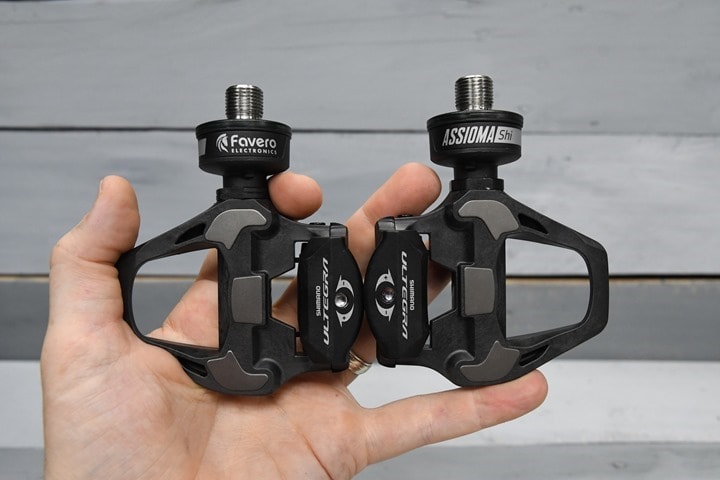
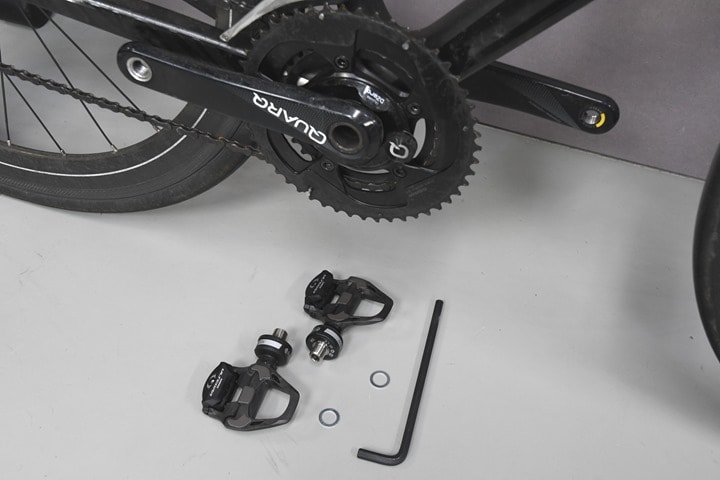

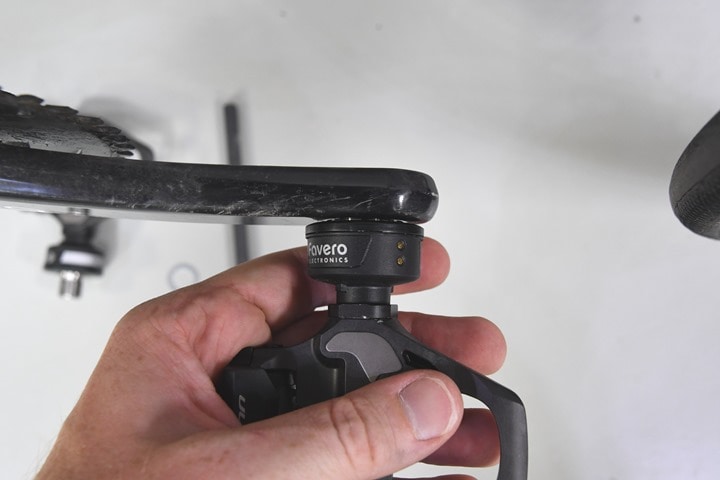
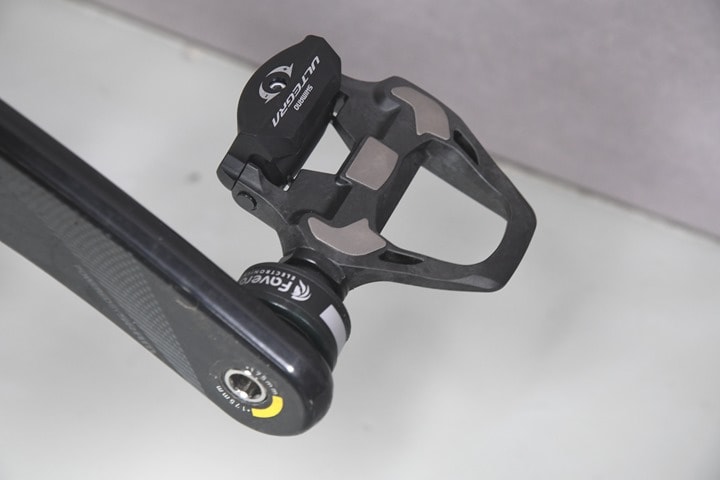

![clip_image001[6] clip_image001[6]](https://media.dcrainmaker.com/images/2021/07/clip_image0016_thumb.png)
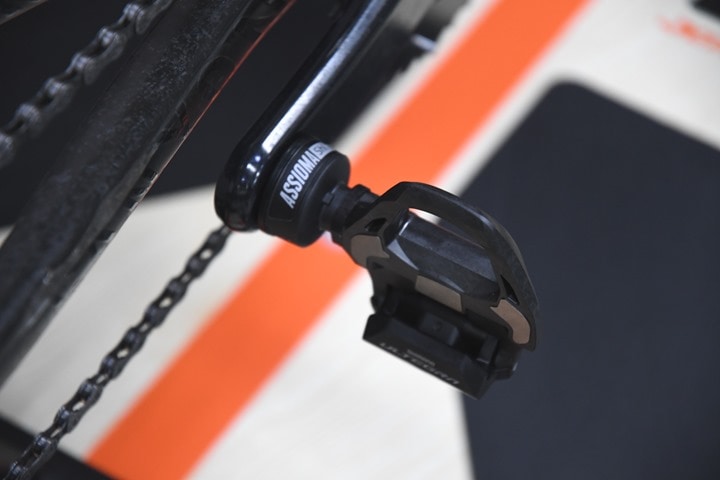
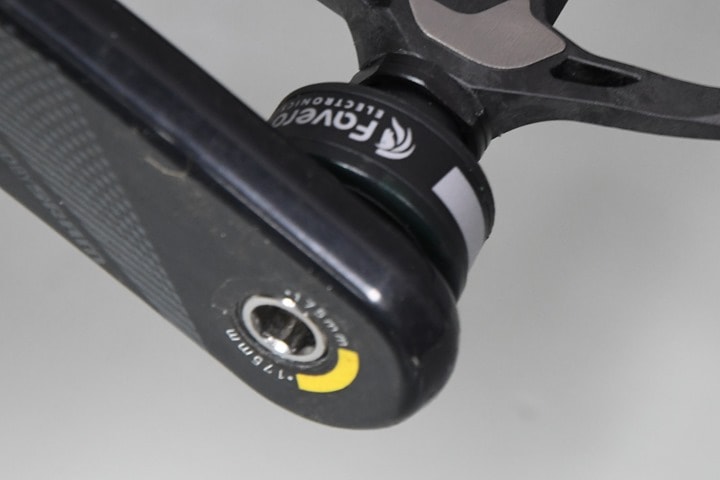
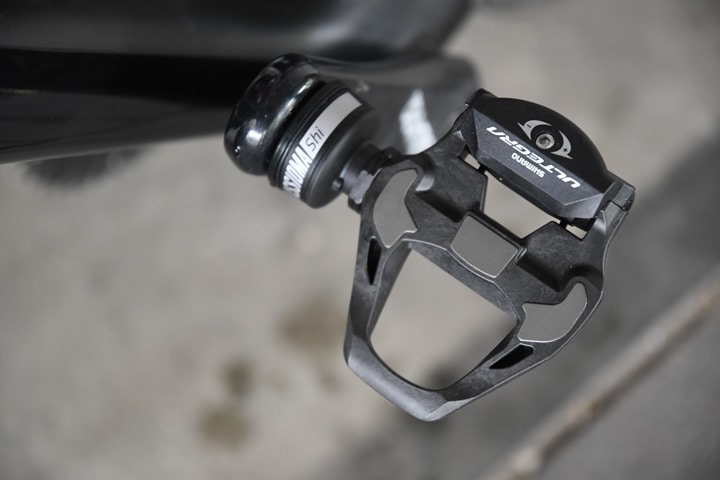

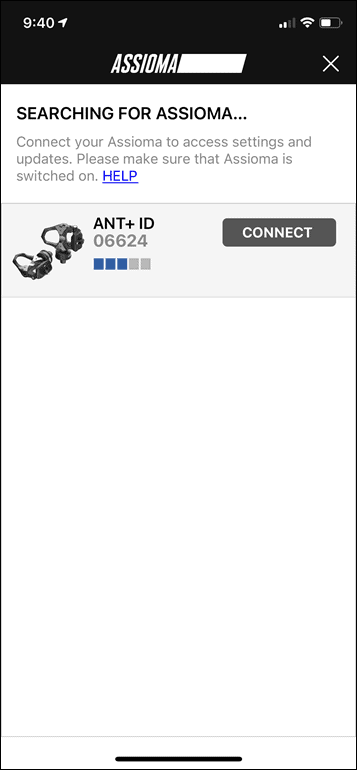
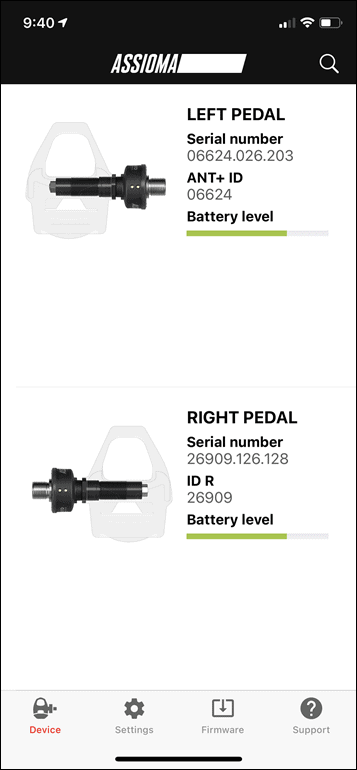
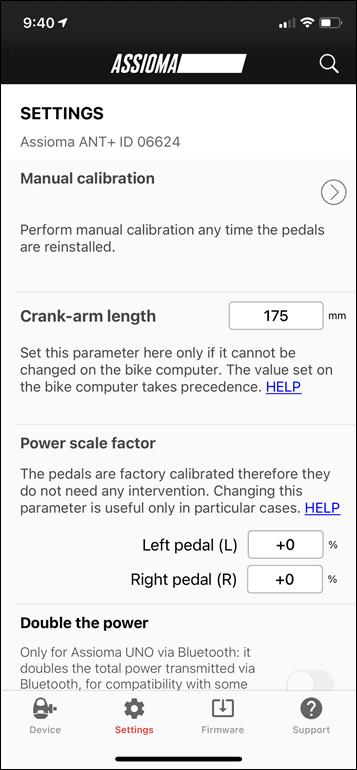

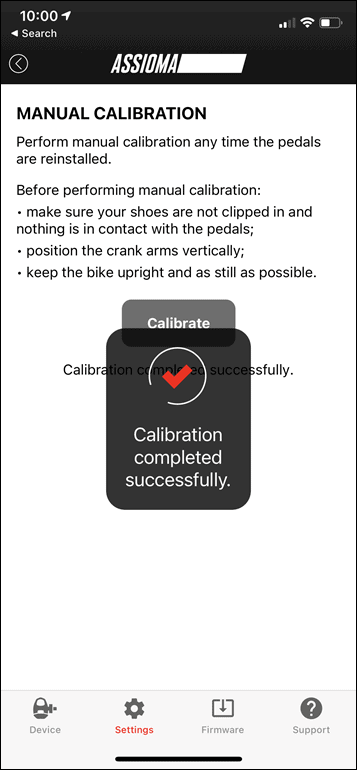

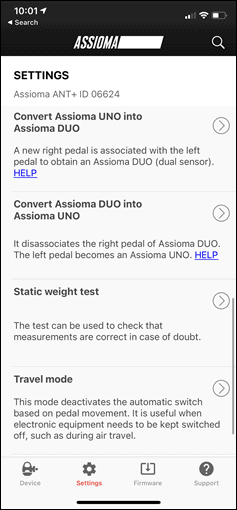
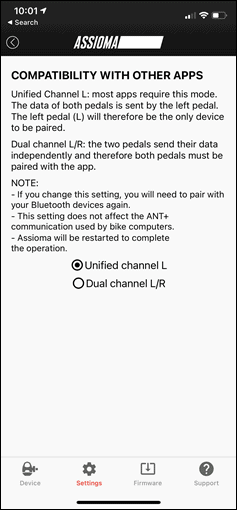
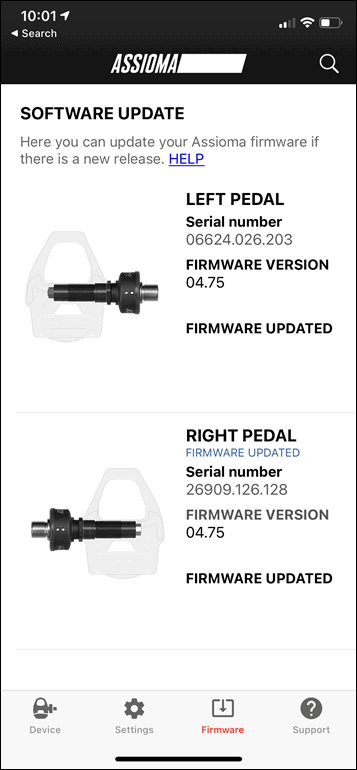
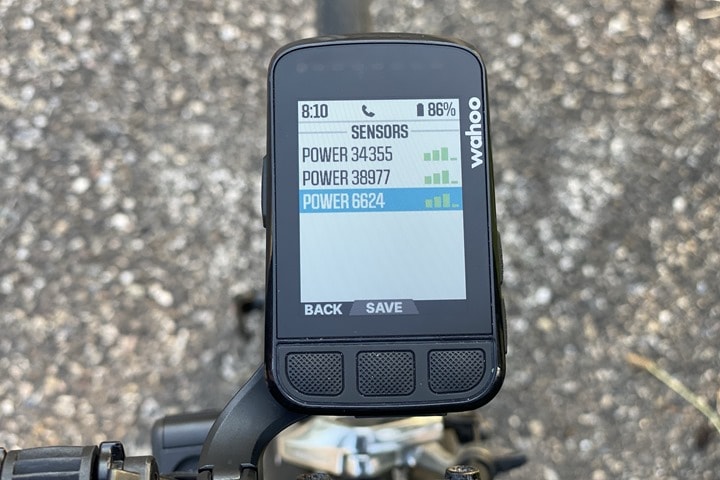
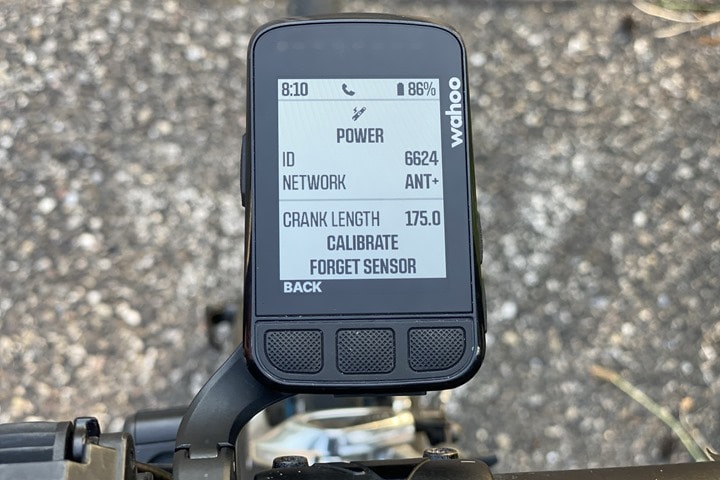
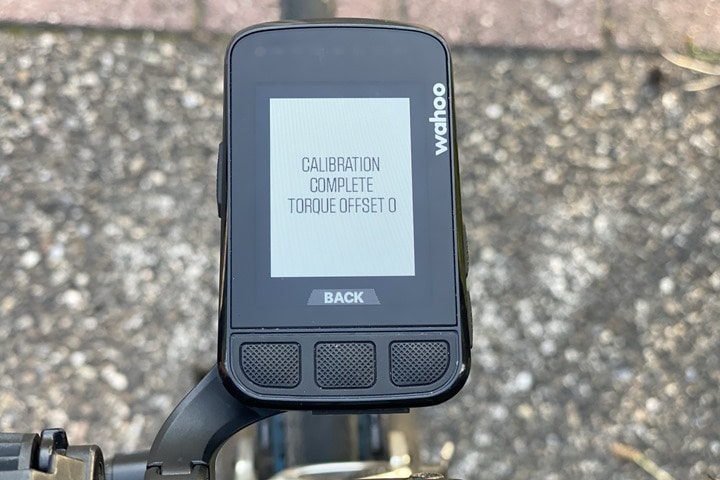





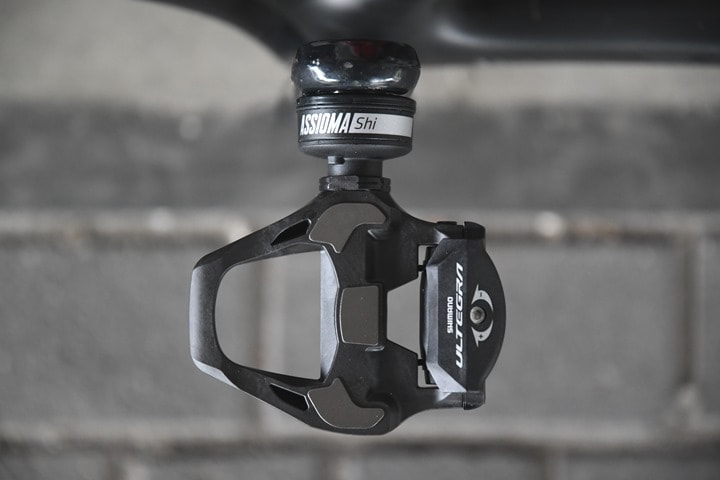




















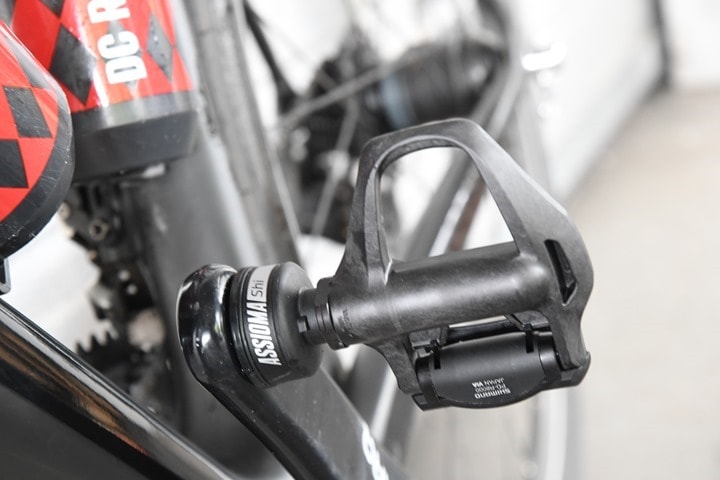






















How is clearance for someone that pedals with the feet on an angle ? Will they hit the pods ? Is 65mm correct ?
65mm is indeed correct. Cornering is reduced slightly, though, one does have to account for pedal height in cornering calculations (for example, when comparing to the Rally pedals).
GPLAMA found it was 33 degrees for the stock PD-R8000, versus 31 degrees after conversion to Favero: link to youtube.com
I am asking about clearance for feet alignment. Not everyone has their shoes set straight. Shoe strike is a concern. Will it heat the chainstay or the pedal. Q factor also affects the fit. So, I will not recommend this pedal to many folks due to potential issues. We have one fellow in the club with the older KEO clone.
I don’t quite get it — a larger stance (foot version of ‘Q factor’ at crank faces) means improved heel clearance at seat-stays. Why do you advise against the plus?
Thanks for the review Ray. Are you sure that the Shimano PD-5800 isn’t compatible? It’s very similar to other compatible pedals of the list.
For the people tha already has a Shimano pedal not compatible is a difficult decision. They have to buy a new Shimano pedal and the Favero spindles or by simply a Favero Assioma with keo cleats.
That’s the list they provided, and unfortunately, the 5800 isn’t on it. :(
it seems that the Shimano PD-5800 axle is also compatible with Shimano Ultegra PD-R8000 and PD-6800 pedals. So, it posibly could work with Assioma Duo-Shi
Do you know if they are going to release a UNO-SHI version?
Or is this not really an option, because of the 65mm Q-factor?
I would also be interested in this, because a left measurement would be enough for me
Great review. Such a shame they couldn’t offer a replacement Shimano pedal body for the existing duo’s. I love the duo’s but look cleats don’t suit me at all, much prefer Shimano’s cleats
Shimano spindles are quite different from Look, making such a switch impossible unless one designed a pedal body with Look bearings and spindle and Shimano cleat interface.
Exactly. So why hasn’t that been done? Licensing?
The product development costs for that likely wouldn’t be worth it. Powermeters are a very small market, and muscling in on taking market share from speedplay/shimano/look is no mean feat.
Is there any chance assioma will do trade in duos for the Shimano spindles?
Chance, potentially – but I wouldn’t expect it anytime soon (since I suspect they’ll be focused on shipping full-price units).
Little insight into your comment about travel mode. If you put pedals into checked in luggage, complete shut down is only compliant way. Otherwise you risk your pedals being left at your home airport in security scan.
Other option is naturally to take those in hand luggage.
Don’t they include 2 chargers, so Ray can put them in travel mode, bring only one charging cord with him to leave behind at the hotel. There’s no rule that says you need to connect both pedals to the charger simultaneously.
“ Since we’re on the BOLT, here’s what the power looks like while pedaling along.”
Looks like the photo referenced above is missing from the article (at least it is using safari on an iPhone).
Odd, added! Thanks!
Thanks for the post. I’ve been looking forward to these becoming available. I have an older set of PD-R8000 Ultegra pedals that are fairly well-worn. If I use these pedal bodies and they eventually wear out, which I tend to do with Shimano pedals, could I replace the pedal bodies with new ones, or does the glue on the Assioma spindles make their installation a “one and done” proposition? Thanks for your excellent reviews. You are my go-to source for product reviews.
These certainly grabbed my attention but I still have flashbacks to the Watteam installation process that took me umpteen attempts to get right. Plus it didn’t reliably last a year even after watteam did the install after I sent them my cranks!
Is it fair to say that if I got the watteam install ok and just failed to get a reliable bond then these should be simple enough?
This is super simple. The Shimano spindles include a hollow outer shaft that screws into the pedal body – in other words, there is no need to disassemble and/or take the bearings out. You unscrew the Shimano spindle out, screw the Assioma spindle in, and you’re done. What’s left is installing the pedals on the bike, which takes 60 seconds. I move my Assiomas between bikes once in a while, the whole process takes 2 minutes including calibration.
Agree, while WatTeam had bags and such, this was super quick and easy (minus the minor annoyance of them not including a simple double-sided wrench with a 17mm and 19mm side).
Pro tip for those of us who do not routinely swap pedals between bikes: lightly grease the pedal threads before installing, it will make removing them later so much easier, and avoid injury. Also make sure chain is on big chain ring when installing and removing.
Source: still recovering from skinned knuckles, and much swearing and sweating from trying to remove pedals with ungreased threads a month ago
Can you try to pull PD-M520 or PD-M540? :)
Ahh, good catch, PD-R540
Actually, nevermind – I had it right as PD-R540. I haven’t tried the other ones, though I’ve gotta imagine if they fit, they would have listed it.
I meant, if you have M520, you could try.
On pics. M520 & R540 axles
Has anyone ordered anything from Favero for delivery into the UK post Brexit? What sort of customs charges did you pay (if any)?
Similar but different – I ordered direct from then for delivery to Canada. $10 (CAD) brokerage charge, sales taxes. YMMV.
Thank you. Bringing them into Canada I suspected this would be the case but great to have it verified.
£97 import plus UPS clearance charges directly ordered from Favero to the UK.
Just took delivery of mine from CRC in the UK. Took a week to get to me, in Canada, via DHL, $17 CAD brokerage fee plus sales tax for a total import charge of $57 CAD.
Wow, taking apart those shimano pedals look way easier (than my experience). Maybe I am just super weak, but I don’t think I am THAT weak compared tot he average cyclist.
I have converted two shimano ultegra pedals to Vector 2 spindles
The first time, it took me about 20 minutes to remove the existing spindle. They were tight and i had to try multiple techniques to get enough levarge on the pedal, ended up screw cleats to a piece of 2x4s to get the job done.
The second time (second set of vector 2s and new ultegra pedals), i used my bike stand clamp as a vice, as I also couldn’t get the spindles to part from he bodies by hand.
A bit disappointed there is no new tech. What was I looking for? I have no idea, lol. That said I was waiting on these for a few months. Given nothing new and some “homework” I just decided to go with the standard DUO and swap over to Look style. Just want to keep it simple. Excited to FINALLY ride with power!
I’m really looking forward to when early adopters/explorers report back if SPD-pedals like PD-ES600 and PD-A600 work with these (even if officially not supported)
+ 1 on this. Would love to find a cheaper way to add power to a gravel/mountain bike.
I’ve switched from Shimano to Look when I bought a Duo a few years ago. My L ‘master’ pedal failed a while back. Head units etc won’t recognise the R pedal. But I just discovered that the Xert iOS app can connect to the R pedal with Bluetooth, correctly doubles the power, so you can use the R as a Uno. Happy with the longevity of at least one of Favero pedals! Posting in case anyone else gets in the same situation and wants to keep using the working pedal.
Another great review. Any idea when an SPD version will be out? (Other then the GPLama hack)
Will they do a MTB SPD version?
Thank you.
They don’t offer it, but you can convert the Look Assiomas to Shimano SPD using the linked info below. I have done it and it works great.
link to trainerroad.com
Looking at the Shimano parts diagrams for mountain and road pedals, I am 90% sure that some of the SPD (MTB) pedal bodies will fit on these spindles. Eg, PD-M8100 / 8120 / 8140.
Hopefully someone will waive their warranty soon and give it a go.
I’ve literally been out to the shed and swapped the spindles between a PD-R540 and a PD-M520. Perfect fit. The Shimano part numbers for the threaded collars of the axle units are the same, so that’s no surprise.
So not only would one expect the Favero axle units to fit in a wide range of SPD mountain bike pedals, but some Shimano flat pedals use the same threaded collar too. Power meters for the downhill and BMX crowds!
The larger Q factor looks to be important to those of us with larger feet, to keep the shoe from rubbing on the crank every rotation. I’m tempted to replace my old Assioma with these just to get the extra 1cm clearance.
Depending on the fit and sensitivity you might need to adjust saddle height. I am worried about smaller riders having issue but it depends on their actual bone structure.
Hi Ray – do you know if there is a MTB compatible in the works?
Is it possible to convert this upgrade kit with xpedo MTB pedals?
Nope. The XPedo pedals use the bearing/spindle arrangement of the original Assiomas, not the Shimano configuration.
Probably not important, but I’d have been interested to see the actual real world weight of the pedals before you gutted them, and the weight after you installed the Favero.
It’s in the video
Why did Assioma take the trouble of suplying only the spindles and not the full pedal?
Copyright fees from Shimano?
Probably less complicated than convincing Shimano to sell them pedal bodies.
Yes, this. Shimano is notoriously sticky with who they’ll sell OEM parts for modification to, and they don’t come cheap.
Same reason why garmin’s first version was a conversion kit and not the full body. That’s why it’s cheaper.
I wasnt talking about get body pedals from Shimano, but doing compatible ones…
So, on my current tri and road bikes, my bike fitter added a 10mm spacer to push my Speedplay pedals out so that my knee tracks straight. I have generally avoided pedal based power meters because of this but I wonder if the increased Q factor on this would end up being the same thing. Anyone have any ideas if you can compare between SPD and Speedplay when considering Q factor?
According to the new Wahoo Speedplay pedal site, Specifications section:
– Pedal Q-Factor = 53mm
That compares closely with the default 53-54mm of typical road pedals, including regular Shimano SPD-SL.
– So, if you have 10mm extra length compared to the regular Speedplay pedals, that puts you at 63mm Pedal Q-Factor.
– That is reasonably close to these hybrid Assioma SPD-SL pedals Q-Factor here, and may be able to match your final position depending on your current later cleat placement.
This is about the q-factor story of this product. Assuming there is room for adjustment, can one simply adjust the cleats on their shoes to compensate for the wider q-factor? Excuse my ignorance, but it seems like a reasonable approach if there is concern about the wider q-factor.
Cleat adjustment on most shoes has about 5mm side to side. But if your shoes do allow it then yes.
Thank you, and I agree, so then if you have room to move them side-to-side to accommodate, then it leaves just the clearance reduction on turns, referring to the previous post about Lama’s findings that there is reduction of 2 degrees, from 33 degrees to 31 degrees.
The bearing assembly for this version seems like a definite downgrade from the standard Assioma pedals. Instead of two inboard and one outboard bearing the Shi version has an inboard bushing and one outboard bearing.
I assume these don’t work with Shimano MTB pedals?
Disappointed because I was hoping these would be a cheaper offering to the new Garmin’s for gravel and road.
Nobody knows. The axle units for PD-R540 road and PD-M520 MTB pedals are interchangeable. The threaded collars that screw into the pedal bodies are the same part. If the Assioma axles fit PD-R540 pedals, then they’ll fit PD-M520s, and very likely quite a few other Shimano MTB pedals too.
What we don’t know is whether they’ll then provide accurate power readings. There could be some non-obvious aspect to the compatibility that prevents this.
Someone needs to try it and find out!
@gplama ?
Awesome review (as always). Do you know what the stand by battery life is like when not riding. I’m assuming there will be very little drain, in any at all. Thanks
The instructions show you don’t need any wrenches for installation, just 2 spanners, 17mm and 19mm (or one adjustable spanner).
I’ve been using Keywin pedals (usually with zero float) on my road bikes for years. I’ve been thinking about buying a power meter, and the Favero seems to tick all the boxes. Why do people generally prefer Look pedals over SPD-SL, or vice versa? I’m just not sure which Assioma version to go for!
Re. Keywins: Am also fully invested in the amazing Keywin pedals, and am hesitant to change over to Look Keo-style cleats, although I still have an old school first gen Look PP96 pedal system on a beater bike, which refuses to die.
As for your comment about Keywins not having any float. Not exactly true – the Keyin float resides in the pedal body, instead of the cleat. However – For track sprinters, they do sell an optional, very small adapter to eliminate all float.
As someone who has recently purchased these, I will have to agree w/ GPLama on this one. Unfortunately, these are headed back to Italy.
Reading Ray’s review and taking into acct my own physiology I thought the Q factor would be a non-issue. I MTB and I am slightly duck-footed. Even with moving the cleats out as far as possible, they do not feel right and I am getting knee and hip pain.
I think with someone Ray’s height it’s probably a non-issue. But being 5’6″ its a bit too much.
As someone who is also 5’6” and has been highly considering purchasing these you have me second guessing. I ride strictly road but I’m seeing my fitter next week so I’ll run it by him and see what he thinks.
Are you selling them?
Hey what did your fitter end up saying? I’m debating purchasing these, I’m almost 5,10 though.
Any chance favero will do the same with Speedplay?
How are folks finding them after a few months of use ?
I have been using them for a month, doing all kinds of rides. From 4+ hours in the mountains to 1 hour FTP test. I have had zero issues with these pedals. For reference I am 183 cm if that has an impact?
Any rumors about a Favero MTB power meter pedal?
For anyone interested in SPD compatibility, I have been using these with a pair of Shimano’s hybrid SPD/flat PD-EH500 pedals for about 6 weeks now with no issues. Obviously I can’t confirm that there won’t be any durability or accuracy problems but I’m very happy for my use (gravel/rail trails/bike paths).
I would be hesitant to use for rocky singletrack as the ‘pod’ part sticks out past the end of my cranks a few mm and would be vulnerable to rock strikes.
Is the EH-500 / Favero Assioma Duo Shi hack still working for you? I have EH-500’s as well and would like to try this.
Hello Folks,
I can confirm Richards version! I had an PD-EH500 in use with my city bike. Before buying the favero (no money for free at the moment) i first got into contact with favero technical service. The made the reponse that only listed models will work! I little bit disappointing!
Therefore i invested a few bugs buying a PD-R540 axle which is supported by Favero! The axle has got the same exact measurements like the PD-EH500 – including the same shimano code ditstributed through their technical service/website.
At my new PD-ME700 pedals for graveling the axle is also the same.
Use the technical information from Shimano as a reference to see if a specific Pedal model change could work. I think that ther would be much more solutions than stated through favero!!
Greetings
Joachim
plz contact the assioma peeps and tell them to get off their collective a$$ez and make some shimano compatible mtb spindle/pedals….ugggh!
ps–i know it is from some months ago but answered a lot of questions i have currently. great stuff. thanks as always.
Any thoughts on these being compatible with other Shimano pedal bodies? Wondering about similar product plans like Garmin and if these would be compatible with Shimano XT SPD pedals for gravel riding.
Will these spindles fit to the xpedo M series pedal bodies? I sa Shane Miller link to youtu.be with the M4 and most recently M8 fit giving you an MTB or gravel application.
Ray – I have a couple questions that I hope you can help me with. I just purchased these Duo-Shi power meters and am using them with R8000 pedals that are, I believe, properly installed.
1. I have only gotten 2 rides in with them so far but the two rides have consistently given me a power imbalance between Left and Right legs that seems pretty substantial. In Garmin Connect, it shows 56%L/44%R overall, with torque effectiveness of 25%L/21%R. I am using an Edge 520 and on screen on the Cycling Dynamics screen it seems that the right leg is consistently much lower. I have done the zero offset calibration a couple times and no change. I assume a static weight test and compare to another power meter is a good next step, right? I only have an older Kickr to compare to so I could only do overall not left/right balance there. Should I contact Favero or is that level of imbalance common?
2. My Edge 520 seems to not store nearly as much of the cycling dynamics data as what you are showing on your pages. I assume this is simply that the 520 doesn’t have as many cool features but wanted to ask. Should I see the cool diagrams, seated vs standing, etc? Do I need a connect IQ item or something?
A couple comments:
I am currently using an old bike, which has 5500 series Shimano cranks. For anyone else who might want to use the pedals (SHI or otherwise) with older cranks, KNOW that the washers do not fit because the area inset in the arm is a smaller diameter. I made some custom high strength stainless steel washers by tediously grinding out a different size washer. For those interested, Lowes sells a washer Item 311726 ($0.22) which is a perfect fit to the outside diameter and can be ground out in the center to fit the pedal threads. It is VERY tedious but can be done with a rounded file and a Dremel with a grinding bit. I did contact Favero and they were extremely friendly but did not have a solution. I have a newer bike that is out of commission at the moment with R8000 cranks so long term I wouldn’t likely be using the pedals on these old cranks but in the short term I wanted them to work!
Second comment – The Q-Factor situation does not appear to be an issue for me. I’m 5’9.5″ and it actually might make things marginally better for me. I have had some trouble finding just the right balance of correct position of cleats and not having heal rib on cranks and chain stays. The extra distance seems like it will totally eliminate that. I will say that there was just a little different feel in the hips after the first right but it wasn’t significant and might have been totally unrelated. Just finished ride #2 and don’t have any off feelings yet…
So if I have Shimano 105 pedals from say 2013 which are still good, they should work with this, right?
In the instructions said do not apply grease.
So on the installation, do we need to cleas the pedal body from grease also?
Is it possible with a DUO set to permanently place the left one on one bicycle and the right one on the other? Then you could use a single sided power meter on both bikes?
No. Only one unit of each pair has the ability to broadcast data. The other unit connects only to the broadcasting unit.
That’s a pitty…. the double sided 4iiii devices offer this opportunity but thanks for your answer,
Hi,
I think the Dou-Shi would fit my handcycle cranks. Do you think they would still be accurate for a cadence range of 40 to 90 and power from 20 to 120?
Thanks for all the reviews,
Jim
So obviously I misunderstood: I actually can’t take my Assioma pedals apart and put the spindles in the PD-R8000 bodies. My existing Assioma spindles don’t have the wrench lands to be removed. (Looks like they are meant to be pressed out)
Oh well…
Would this kit allow for conversion? Apparently, but they ominously state that “This item does not allow to convert the Look® version to the Shimano® version, as the sensor has a different calibration”. Just because of the ‘oil washer’ thing? I can order it and do some testing comparing before and after. (Once I go to the Shimano bodies, I’m not looking to go back)
Thanks for this review.
link to cycling.favero.com
So this was an expensive comparison. ($30.00 shipping)
For an hour long ride, it’s only off by 12.52 watts average power, weighted power is off 10.28 watts, and max power is wonky, it’s range is off -90 watts (the Assioma being higher).
This is comparing my Tacx Smart Bike, with the Assioma pedals with the unofficial upgrade to Shi. They were calibrated prior to the test, and have been in the same environment for more than 24 hours.
The ‘stats’ from the run. Cadence was off a little bit, but it seems to do that. I could not get FulGaz to do the cadence right. It was always WAY off…
RMD, if you were referring to my thread, they survived about 80km so far. They felt a little ‘loose’, and I took them apart and checked them. The grease was still good, but it appears that the inward spindle might be slightly under the size of the OD of the bearings as the bearings for the Shi’s have what looks like 2 cartridge bearings on the outer end, and a pressed in sintered brass sleeve on the inner. (In the Shi spindle, there is an o-ring on the inside of the spindle, with a corresponding groove to hold it. On the non-Shi, and possibly earlier model spindles, there is a funky metal plate that acts as an inner seal, which will not work in place of the o-ring)
SO, the grease you put in the inside the inner end of the bearing assembly is what will try to keep that sleeve from being corrupted with debris (use a lot). Check it often. I really wouldn’t recommend using this configuration for a stationary trainer as I seized up the bearings on a set of SpeedPlay pedals with the amount of sweat I put out. (Ironically they too use (or used to use?) a single o-ring to seal the inner bearings, a totally worthless gesture with any amount of sweat.
So, bottom line, it still works. It’s probably not ideal, but it seems to hold up rather well. If you ride in wet conditions, I can’t recommend either this hack, or the actual Shi pedals, as an o-ring is not an adequate seal, IMO.
YMMV. I don’t think I will change them back. At least until I get more data, and more use out of them. They work, mostly. I’ll be doing some dimensions if anyone is interested. I’m curious to see how much slop there really is in that sleeve… Ride on!
Hi Ray is it necessary to use a torque wrench with that 19mm craw foot wrench? They recommend 5-7nm torque. You didn’t specify this. Thanks.
No, not necessary. Just torque it reasonably tight and do a few sprints to settle it in.
Hi, Thank you for the intensive review. I really enjoyed it. I started cycling last year and considering having a power meter. Assioma duo-shi seems to be the best option for me as compared with Garmin Rally 3, but I am not sure it is compatible with my old Ultegra pedal (PD-6620). Do you have any ideas about the compatibility of Assioma Duo-shi with old Shimano pedals? I would like to keep using Shimano pedals because I am using the same old pedal on my Wahoo KICKR bike.
Hello Chun,
see my answer at position 77 above. You have to check your spindle in comparison to present models from Shimano!
Great help are their dealer manuals listed at the Shimano website searching through with your model number as reference! Then have a look at the details and compare!
Hi Joachim,
Thank you for your help. I found the manual on the Shimano website and found that my old pedal (PD-6620) does not seem to be compatible with the Assioma duo-shi unfortunately.
Hello Chun,
i had a short look at Shimano to compare your 6620 to the PD-R8000 validated through Favero. The final numbers of the axle Assembly 98010 and 98020 are the same. There is also mentioned a list „interchangeability“. In my oppion this means: Shimano produces nearly the same components for many pedals – think about financial effectiveness! Difference could be lighter and more expensive materials but the measurements are identical!
As in my case, i would give it a try! My pedals were also not validated by Favero but they work – several kilometers done yet!
Hi Joachim,
Thank you for the following up. Even though the final numbers are the same, I am not sure that it is compatible with each other for sure. Specifically, the Shimano code # of the Pedal Axle of PD-6620 are Y-45J 98010 (Right) and 98020 (Left) whereas PD-R8000’s are YL8B98010 (RIGHT), 98020 (RIGHT for 4 mm long type; not sure what this is), 98030 (Left), and 98040 (Left for 4 mm long type). So my question is the only thing determining the Axle compatibility across Shimano pedals is the final number regardless of the initial letters?
I was having the same question about my super old pedals. I am a track racer, and use the SPD-R PD 6600 pedal with the two bolt metal cleat (yes, I drill my shoes to fit the cleats). It is sooo hard to clip out in a sprint, I rarely use additional straps unless standing starts for 500 meter tt or team sprint. I have bought about 6 pairs of these pedals (and many sets of cleats) that I find on eBay or anywhere else. 3 for my track bike and 3 for my road bike. Each pedal set lasts about 10 years or more. I am 55 so, they should last me until I am 85, and by that point maybe I will switch. Anyway … the point is … that these pedals are also not on the Favero compatibility chart, but I had a hunch. I found a left side only pedal that was on the list and I swapped the spindles to see if it would fit. And it did. I went ahead and bought the Duo Shi and mounted them on the PD-6600 pedals with no problem. Running the DC Analyzer tool against my PowerTap g3 hub, the assioma Duo Shi on non-verified pedals are working beautifully. I would try to get your hands on a listed compatible pedal and try the swap first. If it fits, I would go for it, unless there is some other factor besides the threading and installation that would cause a pedal to be excluded from Favero’s list.
Thank you for the tips. I would go for it :)
Excellent review, thanks Ray. I recently ordered a pair and have been using them for a week or so. Setup was straight forward and they seem to work well.
One issue that I have a query about is interchangeability with Look Keo pedals. The question seems to come up frequently about putting a shimano pedal onto the original Assioma’s.. The official line from Favero is no, it’s not possible due to the calibration and oil cap. But I’ve seen some suggestions online that it might be possible.
However, what about putting a set of Look pedal bodies on the Assioma-shi’s?
I came off my bike with sore hips a couple of days ago, something I’ve never experienced. A possible cause is the increased Q factor. Buying a set of Look Keos and putting my Assioma Shi’s into them would be a far cheaper solution than starting from scratch. What do people think about this?
hi Ray or anyone else who may know:
Has anyone had any luck adding a pedal extender? For some reason the pedal extender I purchased does not thread in. They are both listed as 9/16 inch but the assisomo also lists as 20 tpi. Wondering if that is a different tpi than my pedal extender.
I’m trying to add to a sram force crank.
ty in advance
Hallo Pat,
i‘m using the SRAM Force AXS wide crank 46/30 edition 2022 (they renewed the complete line this year). I had no problem to install the assioma duo-shi!
Get into contact with assioma in Italy! They are really helpful
Richard, I have purchased the same set up, were the pedals tight to get onto the spindles? There is a space on mine but they work fine or appear to .
Unfortunately pedals PD R540 need the Shimano tool TL-PD40 to remove the existing spindle, it’s not possible with the 17mm wrench
Yes, this should be mentioned in Ray’s post ideally. Same for the rp550 pedals, they need that tool too.
Has anyone else found that the Duo Shi PM pedals develop significant play in their bearings very quickly?
I found the Assioma Duo Shi “adaptor” bearings wore very quickly. After 1000 Km significant play developed and after 3 months I had maybe 1mm of movement. The first time Favero sent me a set of new adaptors. The second time they were less helpful. The bearings last _much_ less than a shimano pedal. New “adaptors” cost 59 Euro last time I looked.
This is what I’m worried about. I do ~200km a week so I might wear these out very quickly. I’ll report back in a few months.
I’m starting to be fed up with how fast they get some significant play and start making noises between every service and maintenance.
I’ve sent them back two times to Assioma. I’ve also replaced some spare parts with their service kit two times in 3 years. I ride them 1200k a month and I’m afraid I have to dissassembly them every 2 months or so in order to do some maitenance.
I think this single bearing design is not good. I love it’s accuracy but I may replace them with ultegra powermeter before too long.
The bearings are absolutely rubbish design. There is an end bearing (packed roller) and a polymer bearing on the shaft. The polymer (or DU bearing) disappears in under 2000km at an average of 220 to 250 watts. There is no way this is a lasting design. I have them and replaced the cartridge once for 65 euros but think I will never ever get pedal based power meters again. Will need to get good crank arm based power meters.
Ray? How are your findings on the longevity of these pedals.
New Favero Assioma Pro MX available as “pre-serie” in Italy:
link to cycling.favero.com
I guess this new “pod-less” design will also be added to the road Assioma’s later.
Any date for a review yet?
Here for this
Also very much here for this
Lovely pedal…until they break!!
Hi friends, wanted to share my recent experience with these pedals and warn others for a potential future disappointment like I have.
Long story short, when these pedals came out I immediately bought a pair of these. And because I liked them so much, I later got a second pair. Everything was all fun and games & I was considering myself a true advocate of Favero and their product (I even bought a pair of MX pedals on launch).
Recently one of the DUO-SHI pedals started to sound like.. well a pedal that is running dry. Not to worry I figured, bushings and stuff are replaceable. Maybe some grease will do and otherwise it will be a fairly cheap fix. (The power was still perfectly fine).
I removed the pedal bodies and one of the bushings (with the correct tools and procedures) which went like it should. The other bushing was a different story, when turning the locknut I noticed the nut was turning but not coming of – it seems that something broke which resulted in the bolt turning with the nut. (Again power was still working as it should)
I reached out to Favero and they initially asked for a video – fast forward we’re 3 months down the road and while both Favero and the reseller can’t tell me how misuse caused this (read how this can be me in the wrong instead of a faulty product). The only solution I’m offered is to replace the pedal for €265 (plus shipping).
As you can imagine I’m not happy. Yes they are a little older than 2 years but they should have a much longer life than this. I’m going to try to enforce some Dutch consumer law, but in the meantime please beware of this and at least check your pedals the month before your warranty runs out. Might save you a couple of hundreds…
Seriously disappointed and thinking about selling the other sets that are still working (including my MX ones). Your product me be great 99% of the time, but that 1% stuff does break it’s about dealing with customers in a fair way. Which to me is not just buying a new pedal and shipping…